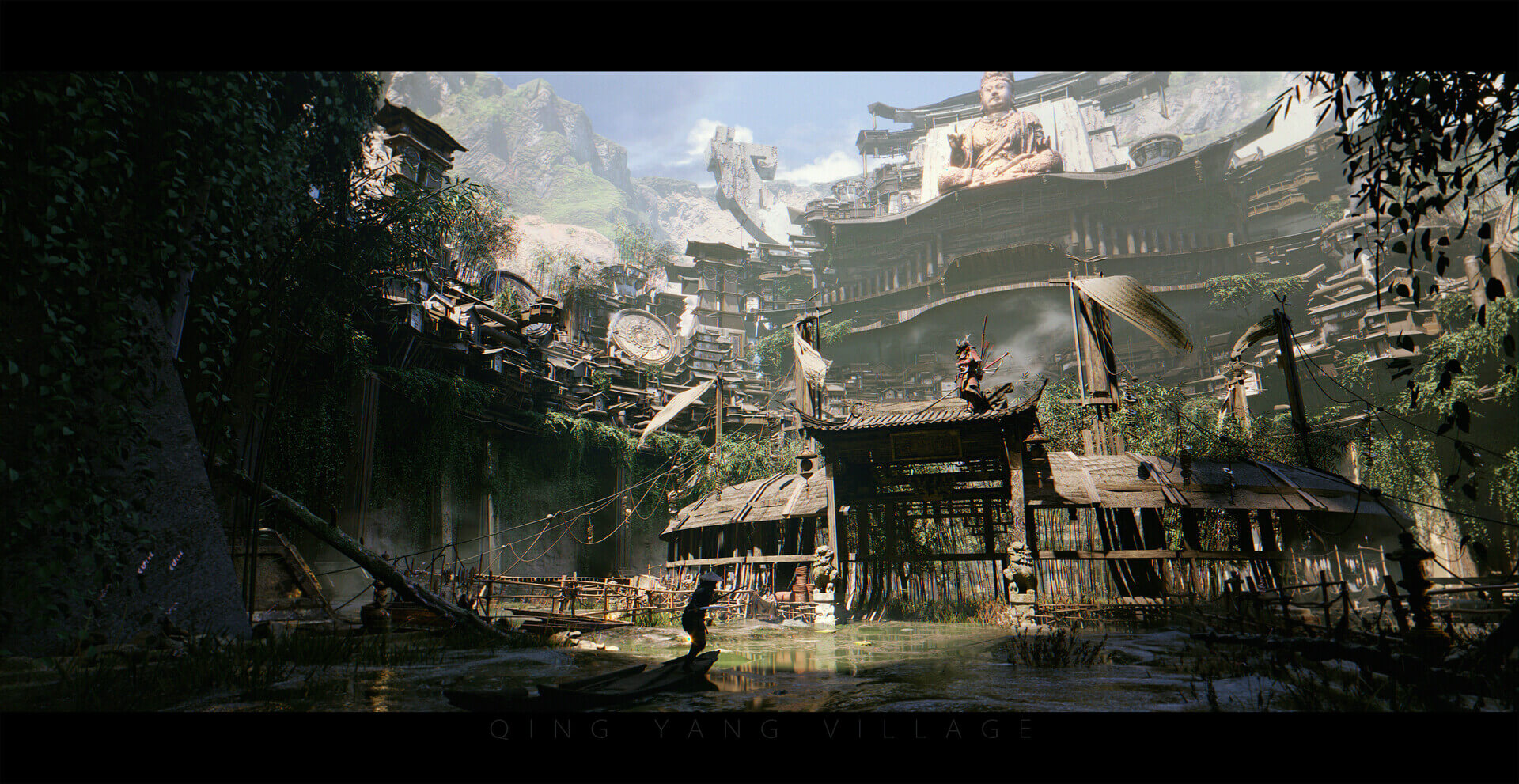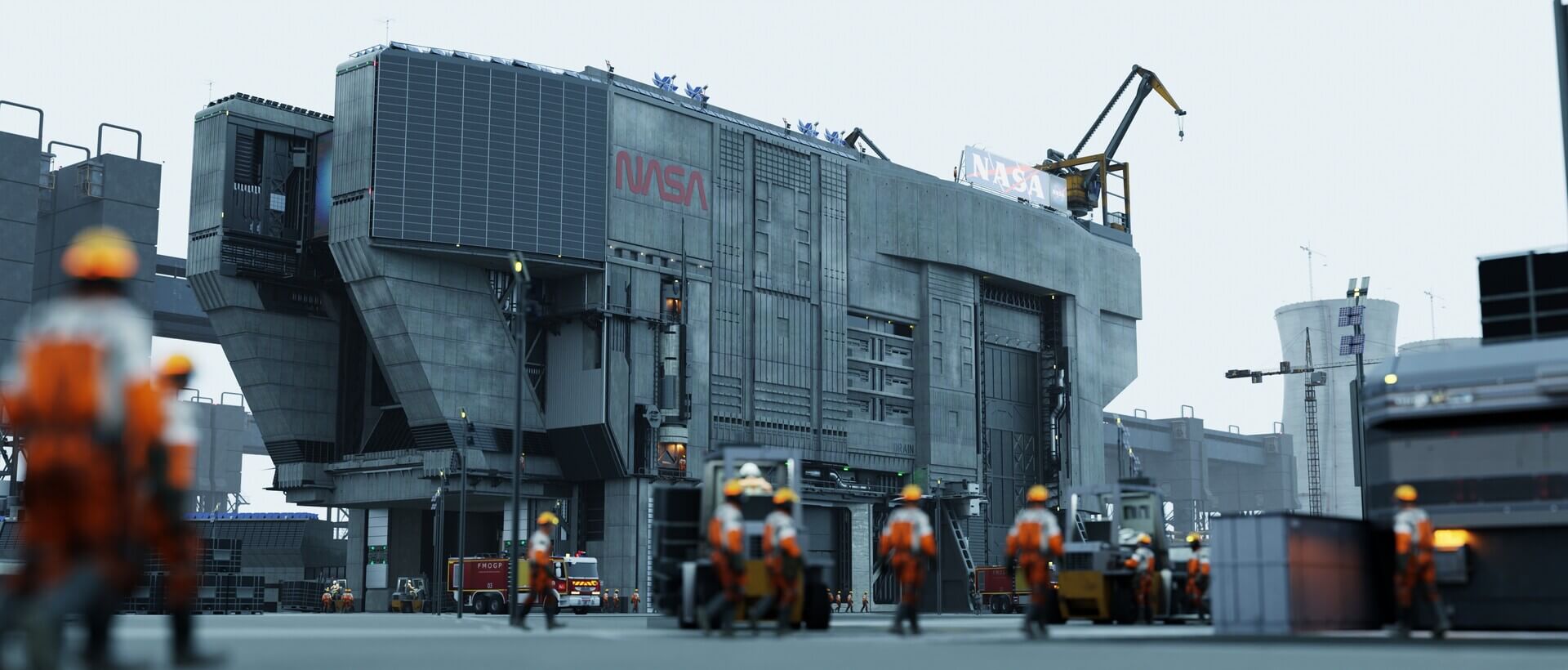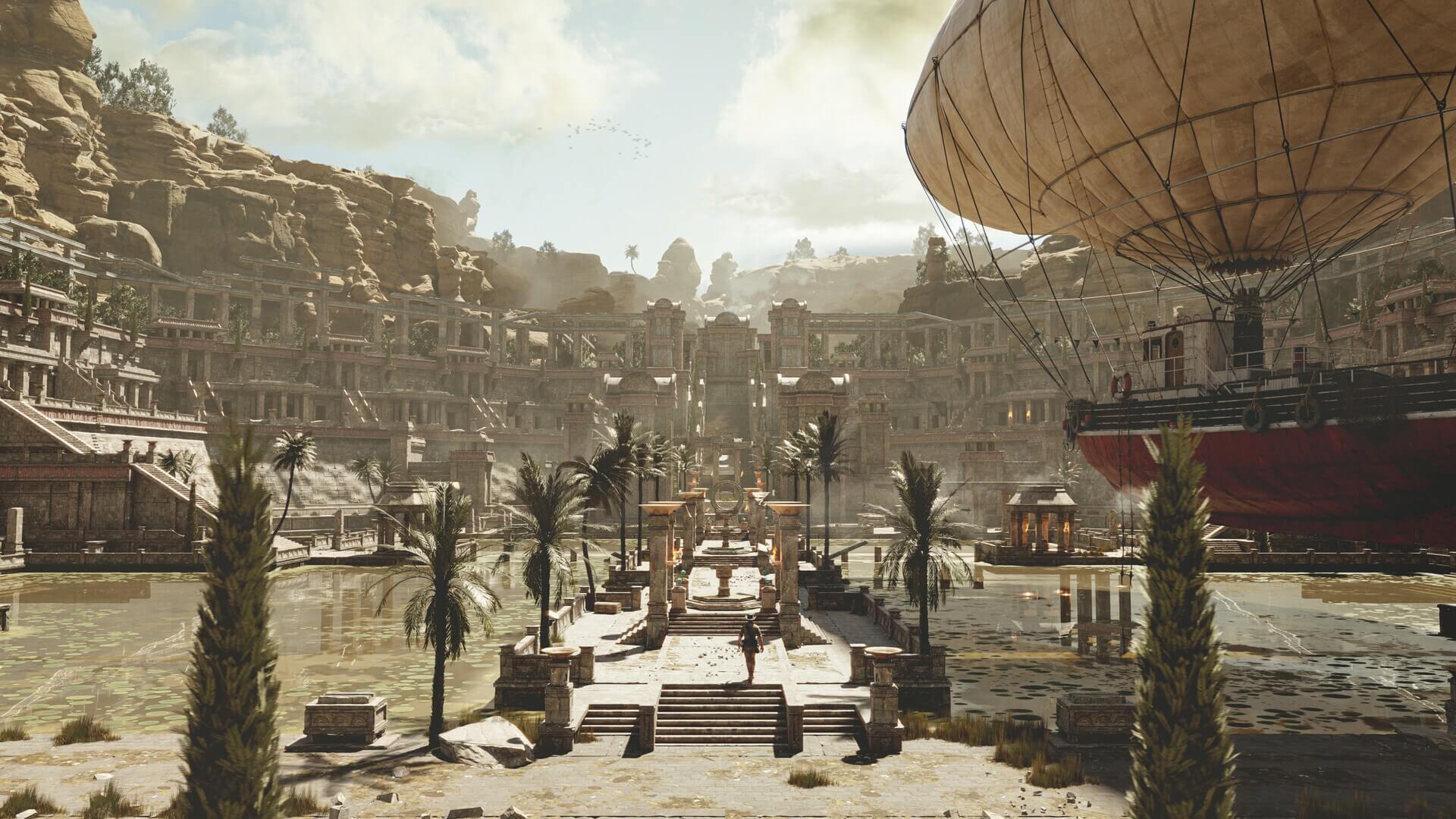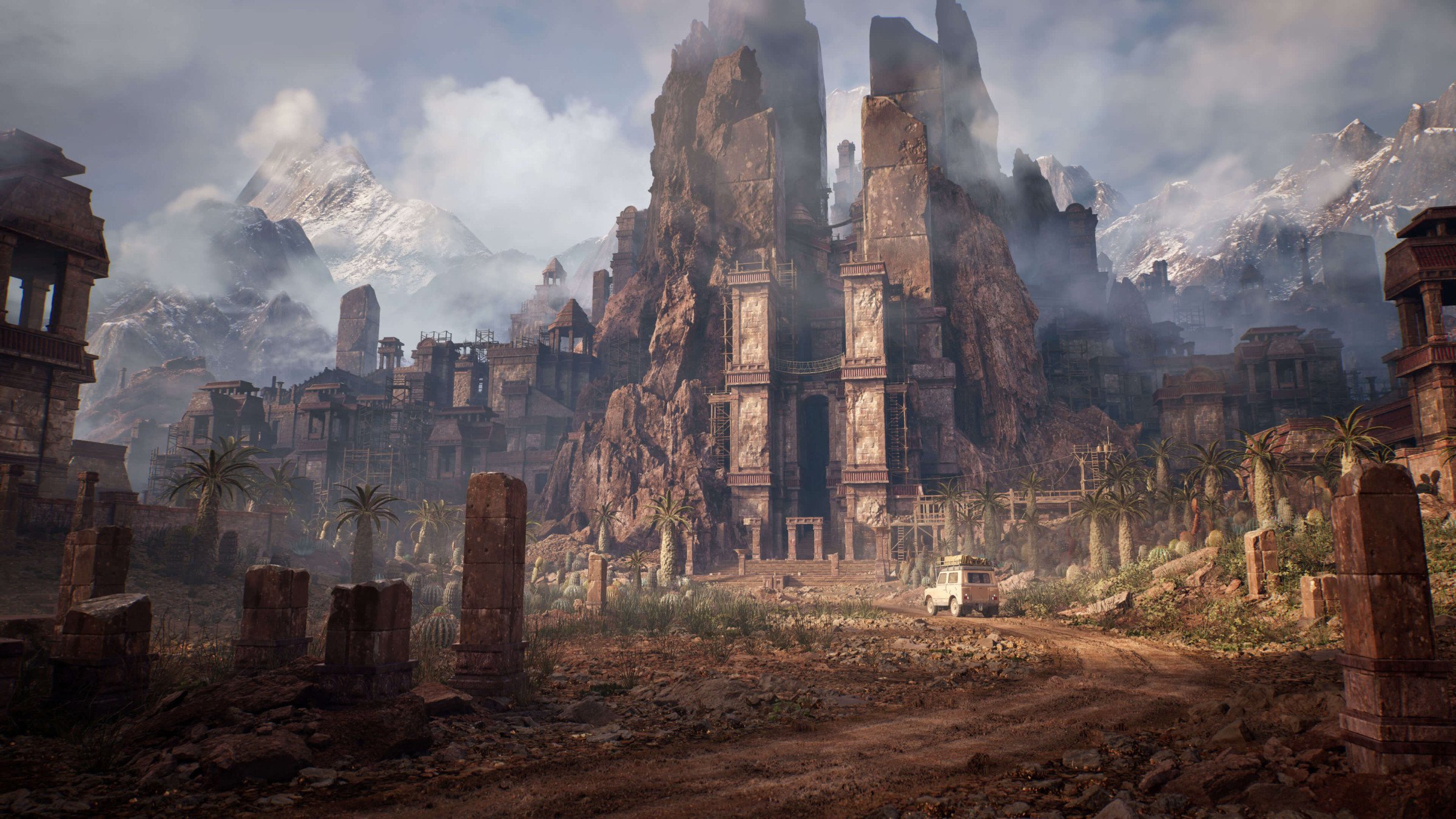Leo Li, an experienced concept artist known for his work on Far Cry Primal and Watch Dogs, has ventured into the imaginative world of Secrets of the Luminara with his latest Blender tutorial for The Gnomon Workshop. As the founder of Creative Gear Design, Leo combines his passion for storytelling with his technical skills, guiding artists through the world-building process in Blender. In this interview, Leo shares insights from his journey, his approach to creating compelling environments, and the key takeaways he hopes artists will gain from his Luminara tutorial.
KitBash3D: Can you share a bit about your journey into concept art? What led you to pursue a career in this field, and how did your experiences shape your approach to creating immersive environments?
Leo Li: I began my career in the gaming industry in 2011 as 2D/UI artist, though I quickly realized that my true interests lay outside of both. After a year, I transitioned to working as a graphic novel illustrator for an independent publisher. During that time, I produced over 160 colored pages for the book called “ Shen Xiang Hui”, which significantly strengthened my art fundations. In 2015, I joined Ubisoft Toronto, where I had the opportunity to work on AAA projects and from there I have progressively evolved my role from illustrator to concept artist.
KB3D: You’ve worked on major titles like Far Cry Primal, Watch Dogs, and futuristic projects for Tesla. What draws you to these kinds of realistic and sci-fi projects, and how do you approach building these worlds?
LL: It's a fairly simple and interesting topic, it gives me wild range to explore the possibility of things only happening in my mind, not from what I’ve seen. Design is driven by life, but the next level of elevating from life is the most interesting point to play with. I love to find the cutting edge tech of nowadays to set up my mind library, to give me sufficient elements and foundation as a starting base, so that I can create stuff that looks grounded but never to be seen.
KB3D: As the founder of Creative Gear Design, you’ve worked on a wide array of AAA game projects. How has your experience with Creative Gear influenced your work and your perspective on the game development process?
LL: Through the last year I’ve been working with a couple studios through CGD, it was quite a challenge paralleling being a concept artist myself and team management simultaneously. But I did benefit quite a lot by acknowledging and learning from different teams and projects, which opened up my artistic styles to fit various projects. And I do feel more confident of being part of the coop pre-production team with different clients.
KB3D: In your tutorial with The Gnomon Workshop, you guide artists through world-building in Blender using the Secrets of the Luminara Kit. What was the most rewarding part of developing this tutorial, and what key insights do you hope artists take away?
LL: I do believe the most valuable part of the whole video is getting used to the 3D to 2D workflow, that allows you to manage your mind set finding the most efficient timing to jump on specific topics. And understanding the connection of the concept art team and level design team, shape your mind to be part of the production team.
KB3D: As artists begin to explore the Secrets of the Luminara challenge, what advice would you give to those using your tutorial as a foundation for their entries? Are there any specific elements or creative approaches you’re particularly excited to see in their submissions?
LL: For new beginners of using any 3D tools like Blender, don’t try to master the tool at the very beginning, only pay attention to what you need at this moment and do your best. I would love to see who could bring more storytelling elements into this scene that could be more interesting.
KB3D: You’re known for creating realistic and futuristic settings. What are some of your go-to techniques for crafting environments that feel both authentic and immersive?
LL: For techniques, I want to share the design theory for all of the buildings I did before, which is the most important scale and proportion. If you can keep everything you put in the scene under the correct scale, such as detailing, textures, etc, everything you create will be very believable and grounded. Here's a quick example, you meant to design a realistic sci-fi building, but it looks cute. Why? There has to be something wrong with the scale which causes everage contrast, the problem can be easily found when zoomed into 1st player view. Of course, storytelling is another most important point to keep in mind, which is highly relevant to functionality.
KB3D: You’ve taught at several art schools and through Gnomon Workshop. What do you enjoy most about teaching, and how do you approach designing lessons that can inspire artists at various stages of their careers?
LL: I love to share knowledge and help others to grow. Every time I see those amazing pieces done by my students it gives me tons of achievements of being a teacher. In most cases, my curriculum is focused on new beginners, but it does cover advanced knowledge that benefits people who want to improve at the next level. The difference is beginners are paying more attention to my techniques and higher level students are more into my workflow and mind set.
KB3D: Cargo offers a wealth of over 20,000 assets. How does Cargo fit into your workflow, and are there specific features that you find particularly useful when building complex scenes?
LL: Cargo is a super easy and straightforward tool to help with my creation process, and it fits into Blender really well. I like to control the size of the texture that allows me to optimize the size of the blender file well.
KB3D: For artists who are just starting with Blender or world-building, what advice would you give them to help them create compelling environments?
LL: I would say starting with KitBash3D assets, like the way of shaping the world with LEGO, avoiding the complex modeling process at the very beginning, that will allow you to enjoy the process of concepting in 3D. Just seeing Blender as a render engine to play with could be an easy simple starting for any beginners.
KB3D: Concept art often involves a balance of 2D and 3D elements. How do you decide when to use one over the other, and what role does Blender play in this process?
LL: I would say it depends, both tools are capable of creating any environmental concept. I’d recommend using the right tool for the right subject or stage in a smart and flexible way to save your valuable time. Blender is definitely capable of creating any style of environmental concept from scratch to finish, but it will take a lot of time to be a great blender artist to do that. Personally I would like to get 80% done in blender and leave 20% in Photoshop for final polish.
KB3D: Looking ahead, are there any new trends or techniques in concept art and world-building that excite you?
LL: Unreal Engine could be the one that drew my attention a lot. It can create super realistic visual looking scenes compared to blender, and it’s the engine that many games are based on. So it will be very helpful to get to know UE beforehand.
Our thanks to Leo for taking the time to sit down for an interview and to The Gnomon Workshop for collaborating on this incredible tutorial. Make sure to take his free workshop in Blender, and explore The Gnomon Workshop for a variety of expert-led courses. Happy KitBashing!
Interview conducted and article written by Carmen Moreno.




